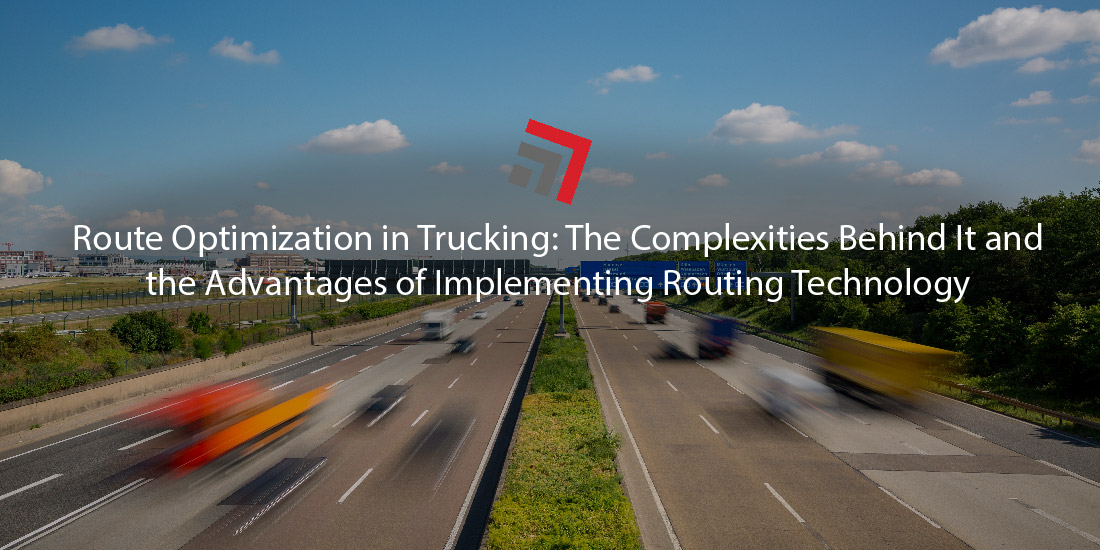For the everyday person, route optimization may appear straightforward.
I’ll put the address of point A and the address of point B, the destination, into my cellphone’s GPS.
Then in a matter of seconds, the fastest and most efficient route is determined by this technology right in our devices.
Sure, this works for planning a trip to a restaurant across town you have never been to or visiting your aunt’s new condo in the suburbs. But, for large-scale commercial trucking, route optimization has to consider additional factors, such as multiple stops and deliveries. Instead of a simple point A to point B route, trucking operations have to account for efficient movement all the way to point Z.
Route Optimization in the Trucking Industry
In the realm of trucking, route optimization is the pursuit to discover efficient and cost-effective routes to deliver loads. For a motor carrier and its fleet, determining a single route for each of its trucks includes consideration of the entirety of the carrier’s operations and its long-term goals. That’s where technology plays a major role.
While everyday people rely on their cellphones with built-in GPS for directions, the trucking industry depends on more intricate technologies for optimizing its routes. This includes complex computer algorithms that are able to sift through millions of variables and return back an optimal route that caters to any specific parameters put in place by the user.
Aside from extra stops and deliveries, Rand McNally, a technology company that services the transportation industry, cites a laundry list of key factors that goes into route optimization technology:
- Available hours
- Closest driver to the route
- Deadlines
- Driver breaks
- Driver qualifications
- Left-hand vs. right-hand turns
- Legal requirements
- Load capacities
- Number of intersections
- Number of turns
- Schedules
- Time windows
- Traffic delays
Advantages of Implementing Routing Optimization Technology
Rand McNally, a company that develops route optimization software, boasts the advantages of carriers and fleets implementing this technology into their operations. Such benefits include enhanced efficiency, reduced fuel costs, and improved satisfaction from customers.
Ram Yadlapalli, a director of routing systems in the industry, seconds these advantages to route optimization technology. In his article for SupplyChainBrain, implores that “routing technology can help maintain—or improve—sustainability performance in times of crisis”.
Aside from reiterating the advantages Rand McNally states, Yadlapalli applies how useful routing technology can be for LTL trucking in particular. He uses the example of how routing for LTL operations is usually done by dividing a trip into geographic areas based on zip codes. Drivers are then assigned to an area depending on the volume of freight available, he writes.
With new and improved routing via this technology, Yadlapelli asserts there could be improvements to efficiency with highly optimized routes that can span multiple zones. In return, determining routes from geographic boundaries can be omitted.
Final Thoughts
With fewer drivers and equipment shortages, coupled with inconsistent volumes from shippers, the trucking industry is not a stranger to lapses of inefficiencies. Advocates, like Yadlapalli, encourage the industry to implement these routing technologies into its operations. New technology should always merit consideration as a potential solution to the current volatility afflicting the trucking industry.
Please do not hesitate to contact one of our team members if you have any further questions on this topic or any others in domestic logistics.



Recent Comments